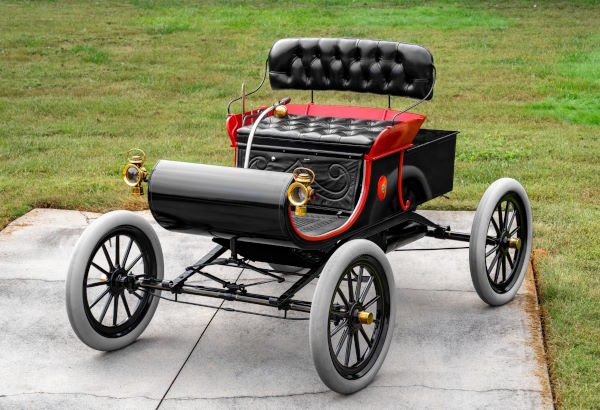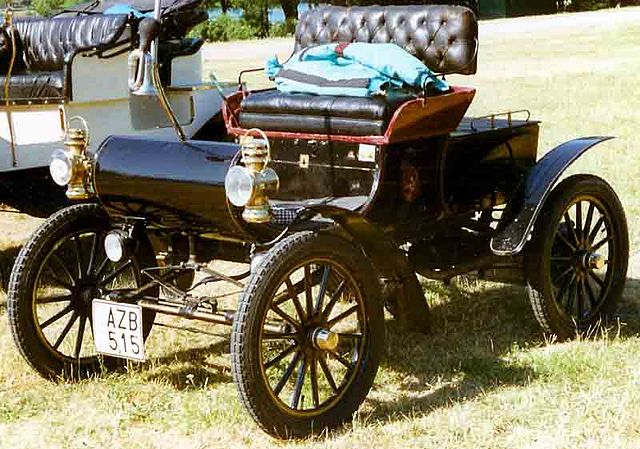
The Oldsmobile Model R Curved Dash, produced between 1901 and 1903, represents a significant chapter in the history of the automobile. As the first mass-produced car in the United States, the Curved Dash not only set the stage for modern automotive manufacturing but also established Oldsmobile as a key player in the early days of the car industry.
This article delves into the design, production, and historical significance of the Oldsmobile Model R Curved Dash, highlighting its contributions to automotive technology and culture.
Introduction to the Oldsmobile Model R Curved Dash

The Oldsmobile Model R Curved Dash was introduced at a time when automobiles were still a novelty. Designed by Ransom E. Olds, this vehicle was pivotal in shaping the approach to automobile manufacturing, employing assembly line techniques that predated those of Henry Ford.
Design and Specifications
The Curved Dash was named for its distinctive curved front panel, which was more than just an aesthetic choice – it provided added strength to the vehicle’s structure. The car was compact, measuring about 95 inches in wheelbase, and was light, weighing around 700 pounds.
It featured a single-cylinder, four-cycle engine located beneath the seat, which delivered a modest 4 to 5 horsepower, reaching speeds of up to 20 miles per hour.
Manufacturing Process
The Model R’s production was revolutionary. After a fire destroyed much of Olds’ original factory in 1901, the need for efficient production led to the adoption of assembly line techniques. This method increased output significantly, allowing Oldsmobile to produce between 600 to 1,500 units per year from 1901 to 1903.
The vehicle’s $650 price tag made it accessible to a broader segment of the population, further encouraging the democratization of car ownership.
The Curved Dash’s Role in Automotive History
The Curved Dash Oldsmobile played a crucial role in promoting the popularity of the automobile in the United States and abroad. Its reliability and affordability helped shift public perception of automobiles from luxury toys to practical transportation solutions.
Market Impact
The accessibility and practicality of the Curved Dash made it a hit among middle-class Americans, fostering a growing interest in automotive travel. Its success also demonstrated the viability of using assembly lines in automobile manufacturing, setting a precedent that would later be perfected by Henry Ford with his Model T.
Cultural Significance
The Model R was not just a vehicle; it became a cultural icon. It featured in the popular song “In My Merry Oldsmobile,” which underscored the car’s place in American popular culture. This exposure helped solidify the automobile’s status as a symbol of freedom and innovation.
Advances in Automotive Technology

The Oldsmobile Model R Curved Dash introduced several technological innovations that influenced future car designs. These advancements were not just mechanical but also addressed the usability and efficiency of automobiles.
Mechanical Innovations
The car’s simple, rugged design made it ideal for the rough, unpaved roads of early 20th-century America. Its tiller steering, friction transmission, and center-pivot front axle allowed for easier operation and maintenance compared to other vehicles of its time.
Production Techniques
The assembly line technique used in the production of the Curved Dash was a forerunner to the more famous Ford assembly line. It allowed for quicker production times and reduced costs, making the Curved Dash one of the first affordable cars in America.
Challenges and Criticisms of the Curved Dash
Despite its pioneering status and success, the Oldsmobile Model R Curved Dash faced its share of challenges and criticisms. These issues not only reflected the technical and societal hurdles of early automotive development but also provided valuable lessons that influenced future innovations in the car industry.
Technical Limitations
The Curved Dash, while innovative, was not without its flaws. Its single-cylinder engine was underpowered by today’s standards, and the lack of a proper gearbox made hill climbing difficult. The vehicle’s tiller steering, though simpler than a steering wheel, required considerable effort and skill, which limited its appeal to more adventurous drivers.
Moreover, the suspension system was primitive, offering little comfort on the rough roads of the early 1900s. These technical limitations highlighted the need for ongoing innovation in automotive engineering.
Safety Concerns
Safety standards in the early 20th century were virtually nonexistent compared to the rigorous regulations in place today. The Curved Dash, with its open design and minimalistic construction, offered little protection to its occupants in the event of a crash.
The vehicle’s slow speed somewhat mitigated this issue, but as roads and driving conditions improved, the demand for safer cars grew. This pushed manufacturers, including Oldsmobile, to develop vehicles with better safety features and more robust designs.
Response to Market Competition
As the automobile industry grew, the Curved Dash faced increasing competition from other manufacturers who introduced cars with more advanced features and greater capacities. Brands like Ford and Chevrolet began to dominate the market with their models, which offered more powerful engines and innovative features such as electric starters and closed bodies.
Oldsmobile was forced to continually innovate to keep up with these competitors, leading to subsequent models that aimed to address the shortcomings of the Curved Dash.
Impact on Oldsmobile’s Evolution
The challenges and criticisms of the Curved Dash were crucial in shaping the future of Oldsmobile. They underscored the importance of adaptability and innovation in an increasingly competitive market. Oldsmobile’s response to these challenges helped pave the way for later successes, as the company expanded its range to include more luxurious and technically advanced models.
This evolution reflected a broader trend in the automotive industry towards diversification and specialization in vehicle production.
Legacy of the Curved Dash

The influence of the Oldsmobile Model R Curved Dash extends beyond its production years. It set standards in manufacturing, design, and cultural impact that are still relevant today.
Influence on Later Models
The principles of simplicity and efficiency embodied in the Curved Dash influenced numerous subsequent vehicle designs. The focus on affordability and mass production can be seen as a direct precursor to the philosophy behind the Ford Model T.
Preservation and Collectibility
Today, the Curved Dash is a prized collectable among classic car enthusiasts. Its importance in automotive history makes it a staple in museum collections around the world, celebrated for its pioneering role in the mass production of automobiles.
Conclusion
The Oldsmobile Model R Curved Dash is not merely a relic of automotive history; it is a testament to innovation and perseverance. Its introduction marked the beginning of what would become a global automotive industry, characterized by mass production techniques and widespread accessibility.
The Curved Dash exemplifies the spirit of an era that believed in the power of technology to transform daily life. Its legacy continues to influence the design and production of vehicles today, reminding us of the humble beginnings of a now indispensable part of modern life.
